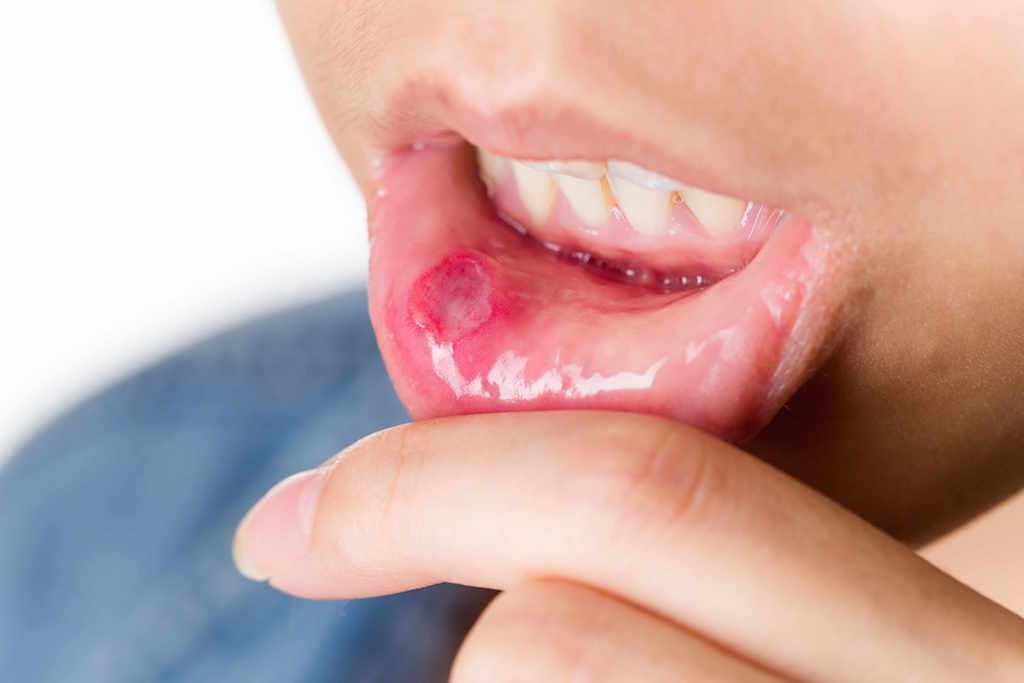PUBLISHED IN TCI WEEKLY NEWS
November 28th 2015
 Recurrent mouth ulcers (recurrent aphthous stomatitis) are painful, round lesions that develop on the linings of the cheeks and lips, the tongue or the base of the gums. The tendency to develop these ulcers is inherited. There can be one or many ulcers at the same time, and they can be recurrent. Multiple ulcers are scattered across the lining of the mouth, not clustered.
Recurrent mouth ulcers (recurrent aphthous stomatitis) are painful, round lesions that develop on the linings of the cheeks and lips, the tongue or the base of the gums. The tendency to develop these ulcers is inherited. There can be one or many ulcers at the same time, and they can be recurrent. Multiple ulcers are scattered across the lining of the mouth, not clustered.
Approximately 17% of the US population has recurrent aphthous stomatitis, which is classified into three categories:
• Minor ulcers are less than 1 centimeter in diameter and do not leave scars. The sores usually heal within two weeks.
• Major ulcers (also called Sutton’s disease) are 1cm or more in diameter, take longer than minor ulcers to heal and may leave scars.
• Herpetiform ulcers are clusters of dozens of smaller ulcers. This form is rare.
Minor ulcers are the most common and, although painful, are self-limiting and more of an annoyance. Several (2-6 ulcers) can occur per episode and several episodes can occur each year. Major ulcers are large, painful, frequent sores that can reach 2 to 4 centimeters in diameter. The ulcers can interfere with speech and eating and can last for weeks to months, causing significant pain and disability. When they do heal, they may leave scars that can make it more difficult to move the tongue and can destroy oral tissue.
Symptoms
You may feel a burning or tingling sensation in an area of inflammation before an ulcer appears. An ulcer takes two to three days to form completely. The sores are round, shallow, symmetrical and painful. They usually are found on the inner part of the lips and cheeks and the tongue. . Ulcers also can be associated with other diseases, particularly connective tissue diseases such as lupus or Behçet’s syndrome, which cause symptoms on the eyes and genitals as well as the mouth.
Diagnosis
Minor ulcers are diagnosed mostly by process of elimination. Other than maintaining general good health there is no way to prevent them. If the ulcers become more frequent or severe, are accompanied by other symptoms (such as rashes, joint pain, fevers or diarrhea) or are larger than about ½inch in diameter, you should visit your dentist or physician. He or she will try to rule out blood diseases, connective tissue diseases, drug reactions and skin disorders. Occasionally a biopsy and blood tests may be required to rule out other conditions or diseases.
The cause of ulcers is not known, but most theories involve an immune abnormality. Certain blood diseases, vitamin and mineral deficiencies, allergies, trauma and Crohn’s disease cause similar ulcers. Ulcers are often confused with cold sores, which are caused by a herpes virus. This is not the same.
Treatment
Treatment focuses on relieving symptoms. Rinsing with a warm, salt-water solution and eating bland foods can minimize discomfort. Anesthetic medications or over-the-counter agents that are placed directly on the sores to coat them also may help.
People with more severe disease may need steroid medications placed on the lesions. These medications significantly shorten the healing time of the ulcers and prevent them from becoming larger. Other possible treatments include placing a medication called chlortetracycline (Aureomycin) on the sores or injecting steroids into the sores. In very severe, disabling cases, your dentist may prescribe oral medication.
When To Call a Professional
Ulcers are usually painful but are self-limiting and not a significant risk to your health. However, if you have severe, recurring or if they are becoming worse, consult your dentist or physician.